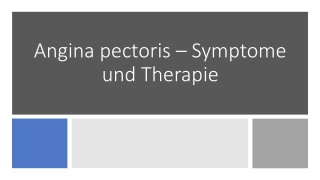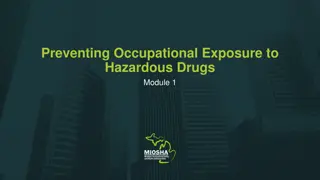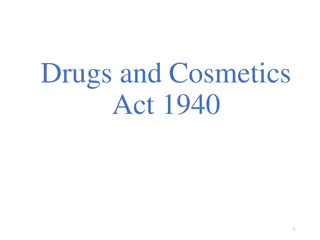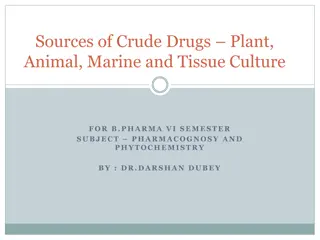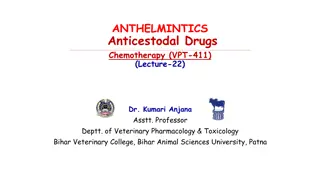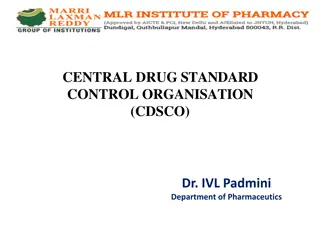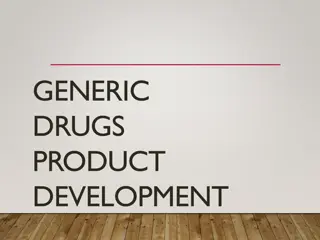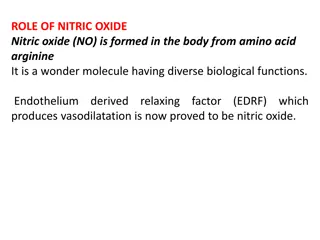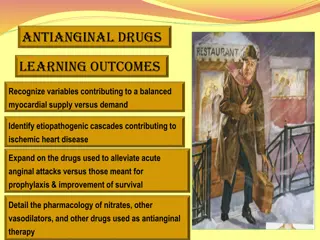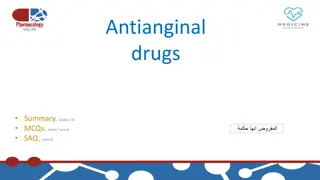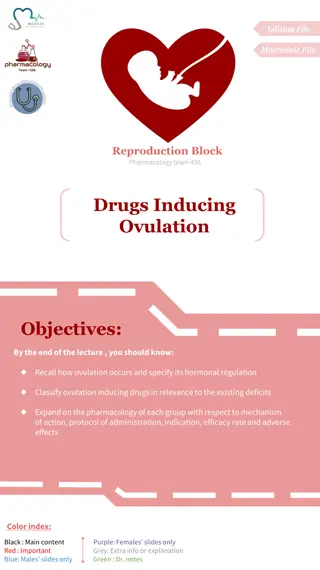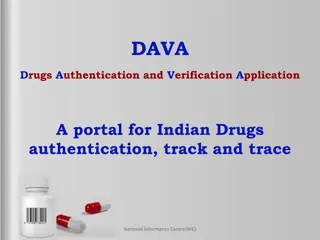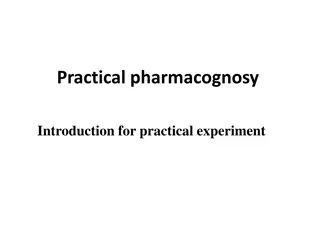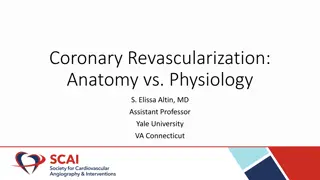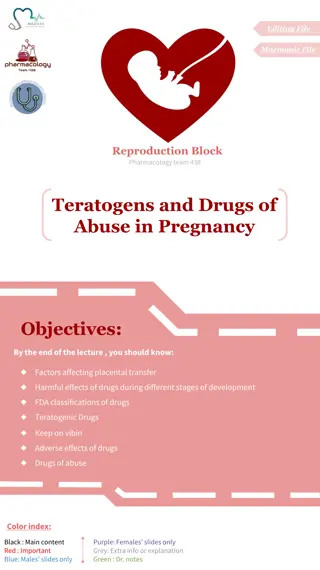
Angina Pectoris and Antianginal Drugs
Angina pectoris is chest pain caused by reduced blood flow to the heart. Learn about antianginal drugs like nitrates and beta-blockers used to manage angina symptoms. Explore the pharmacokinetics and pharmacodynamics of nitrates, along with common adverse reactions. Stay informed to better understand and address angina issues effectively.
Download Presentation

Please find below an Image/Link to download the presentation.
The content on the website is provided AS IS for your information and personal use only. It may not be sold, licensed, or shared on other websites without obtaining consent from the author. If you encounter any issues during the download, it is possible that the publisher has removed the file from their server.
You are allowed to download the files provided on this website for personal or commercial use, subject to the condition that they are used lawfully. All files are the property of their respective owners.
The content on the website is provided AS IS for your information and personal use only. It may not be sold, licensed, or shared on other websites without obtaining consent from the author.
E N D
Presentation Transcript
AL-MUSTAQBAL UNIVERSITY COLLEGE DEPARTMENT OF ANESTHETIC TECHNOLOGY DEPARTMENT OF ANESTHETIC TECHNOLOGY PHARMACOLOGY PHARMACOLOGY DONE DONE BY : DR. ABDULLA K RAHEE BY : DR. ABDULLA K RAHEEM
Angina pectoris Chest pain or discomfort that keeps coming back. It happens when some part of your heart doesn't get enough blood and oxygen. Angina can be a symptom of coronary artery disease (CAD). This occurs when arteries that carry blood to your heart become narrowed and blocked because of atherosclerosis or a blood clot. characteristic by pain in the center of the chest. You may also feel the discomfort in your neck, jaw, shoulder, back or arm.
Antianginal drugs Antianginal drugs treat angina by reducing myocardial oxygen demand (reducing the amount of oxygen the heart needs to do its work), by increasing the supply of oxygen to the heart, or both. The three classes of antianginal drugs discussed in this section include: nitrates (for treating acute angina) beta-adrenergic blockers (for long-term prevention of angina). Ca channel blockers. (used when other drugs fail to prevent angina).
Antianginal drugs Nitrates Nitrates are the drugs of choice for relieving acute angina. Nitrates commonly prescribed to treat angina include: amyl nitrite isosorbide dinitrate isosorbide mononitrate nitroglycerin.(angesid)
Nitrates Pharmacokinetics Nitrates can be administered in a variety of ways. Sublingually (under the tongue) buccally (in the pocket of the cheek), as chewable tablets, lingual aerosols (sprayed onto or under the tongue), By inhalation (amyl nitrite) are absorbed almost completely because the mucous membranes of the mouth have a rich blood supply. Swallowed nitrate capsules are absorbed through the mucous membranes of the GI tract, and only about one-half of the dose enters circulation. Transdermal nitrates (a patch or ointment placed on the skin) I.V. nitroglycerin, which doesn t need to be absorbed, goes directly into circulation.
Nitrates Pharmacodynamics Nitrates cause the smooth muscle of the veins to relax and dilate. When the veins dilate, less blood returns to the heart. This, in turn, reduces the oxygen requirements of the heart. Advers reactions to nitrates Headache is the most common adverse reaction. Hypotension may also occur, accompanied by dizziness and increased heart rate.
Beta Blockers Beta-adrenergic antagonists (also called beta blockers) are used for long-term prevention of angina and are one of the main types of drugs used to treat hypertension. Beta-adrenergic blockers include: Atenolol Metoprolol Nadolol Propranolol
Beta Blockers Pharmacokinetics Metoprolol and propranolol are absorbed well from the GI tract, whereas less than one-half the dose of atenolol or nadolol is absorbed. These beta-adrenergic blockers are distributed widely. Propranolol is highly protein-bound; the other beta adrenergic blockers are poorly protein-bound.
Beta Blockers Pharmacodynamics Beta-adrenergic blockers decrease blood pressure and block beta adrenergic receptor sites in the heart muscle and the conduction system. This decreases the heart rate and reduces the force of the heart s contractions, resulting in a lower demand for oxygen
Beta Blockers Pharmacotherapeutics Beta-adrenergic blockers are indicated for: 1. long-term prevention of angina. 2. In acute coronary syndrome. 3. Metoprolol may also be used for heart failure. 4. Beta-adrenergic blockers are also first-line therapy for treating hypertension.
Beta Blockers Adverse effects Beta-adrenergic blockers may cause: bradycardia hypotension nausea and vomiting significant constriction of the bronchioles (none selective one)
Calcium channel blockers are commonly used to prevent angina that doesn t respond to drugs in either of the other antianginal classes. Calcium channel blockers used to treat angina include: amlodipine nicardipine nifedipine verapamil. diltiazem
How calcium channel blockers work Calcium channel blockers increase the myocardial oxygen supply and slow the heart rate. The drugs produce these effects by blocking the slow calcium channel. This action inhibits the influx of extracellular calcium ions across both myocardial and vascular smooth muscle cell membranes. No calcium = dilation This calcium blockade causes the coronary arteries to dilate, and increasing myocardial oxygen supply.
Calcium channel blockers Pharmacokinetics When administered orally, calcium channel blockers are absorbed quickly and almost completely. The bioavailability of these drugs is much higher. The calcium channel blockers are highly bound to plasma proteins.
Pharmacotherapeutics (uses) Calcium channel blockers are used for long-term prevention of angina only, not short-term relief of chest pain. Calcium channel blockers are used for treatment hypertension. Calcium channel blockers are used for treatment of arrhythmias
Drug interactions Calcium salts and vitamin D reduce the effectiveness of calcium channel blockers. Verapamil and diltiazem increase the risk of digoxin toxicity. Enhance the action of carbamazepine, and may cause myocardial depression.

